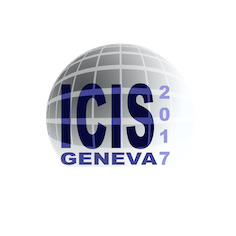Speaker
Description
The MARA low-energy branch (MARA-LEB) is currently under development at the Univ. of Jyväskylä. The facility will be focused on the study of ground-state properties of exotic proton-rich nuclei employing in-gas-cell and in-gas-jet resonance ionisation spectroscopy, and will provide mass measurements of nuclei at the N=Z line of particular interest to the astrophysical rp process.
MARA-LEB will couple the recently commissioned MARA vacuum-mode mass separator [1] with a gas cell combined with an ion guide system for stopping, thermalising and transporting reaction products to the experimental stations. The mass selectivity of MARA, combined with the elemental selectivity achieved through laser ionisation within the gas cell, will open the way to the study of nuclei with production cross-sections several orders of magnitude smaller than isobars produced in the same nuclear reaction. Isotopes at or close to the N=Z line, for example light Ag and Sn isotopes, are of key interest. However, reliable experimental data on their ground-state properties are not available due to the absence of a technique which can be used for their efficient production and separation.
The gas cell is based on the concept developed at KU Leuven [2] and designed for the S3-LEB facility, GANIL. It will be able to use both Ar and He buffer gases to allow for more efficient neutralisation or faster extraction times respectively. Laser ionisation will be possible using a dedicated Ti:Sapphire laser system either in the gas cell or in the gas jet. Following extraction from the cell the ions will be transferred by radiofrequency ion guides and accelerated towards a magnetic dipole for further mass separation before transportation to the experimental setups.
In the first phase of the project a detector setup will be used for the characterisation and commissioning of the gas cell. Important information related to ionisation density in the gas and the effect on neutralisation will be studied, of direct interest to S3-LEB. In the second phase the gas cell will be combined with a laser ionisation spectroscopy setup and in the third phase with an MR-TOF-MS [3] which is currently being designed at IGISOL.
This presentation will focus on the status of the design and development of the facility.
References
[1] J. Sarén, PhD thesis, University of Jyväskylä (2011).
[2] Yu. Kudryavtsev et. al., Nucl. Instr. and Meth. B 376, 345 (2016).
[3] R.N. Wolf et. al., Nucl. Instr. and Meth. A 686, 82 (2012).




